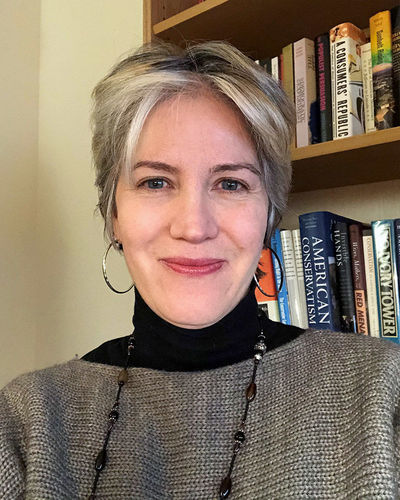
Michelle Nickerson is an associate professor of history at Loyola University Chicago. She received a Mother Theodore Guerin Research Travel Grant from the Cushwa Center in 2020 for her project “Catholic Resistance: How the Camden 28 Put the Vietnam War on Trial.” Philip Byers recently corresponded with Nickerson about her research.
Philip Byers: Some of our readers may have seen the star-studded Aaron Sorkin film, The Trial of the Chicago 7, released on Netflix last fall. But for all the public attention afforded to that group of radicals, they were not the only activists busy during the 1960s and early 1970s. Who were the Camden 28, and what did they do to earn that moniker?
Michelle Nickerson: The Camden 28 were opponents of the Vietnam War who sought to disrupt the operations of the selective service by raiding a draft board in 1971 to destroy individual files of men who were about to be called up. They were part of a movement called “Catholic Resistance” or the “Catholic Left,” a decentralized network of activists that conducted more than one hundred raids mostly on the East Coast and Midwest. My subjects became known as the “Camden 28” after they were arrested in the midst of burglarizing an office in the Camden, New Jersey, federal building and faced trial together two years later.
PB: Your grant proposal described the actions by and trial of the Camden 28 as “a window into the world of faith-based radicalism in the 1960s.” Summarize your argument for us—what does this window reveal about the history of faith-based activism in the 20th century?
MN: The story of the Camden 28 reveals how Catholic theology operated in American radicalism—how it shaped the political thinking and action of the Vietnam War generation. Although the founders of the “Catholic Left” were devout Catholics, the movement ultimately attracted activists from different faiths as well as lapsed Catholics and non-religious actors. I have found that, nevertheless, a shared respect for Catholic social justice traditions animated them all as a group. The spiritual component, in other words, proved an important factor regardless of one’s religious attitudes.
PB: One of your premises is that even in the rare cases when the Catholic Left gets attention, that focus tends to fixate on men, such as the Berrigan brothers. To redress that imbalance, you used your Guerin grant to conduct interviews with two key women participants, Anne Dunham and Lianne Moccia. Why have so many accounts highlighted the men, and what did your engagement with Dunham and Moccia reveal to you about Catholic resistance?
MN: Yes, as other scholars have already noted, the Catholic Left tended to express itself in overtly masculine terms. This reflected the tone of the larger “Vietnam Resistance” movement that opposed the war mainly by attacking that draft system. So much focus on conscription prompted critics to question the courage and sense of duty driving men who refused to serve. In response, the war’s opponents sought to emphasize the manliness of their protests—of taking an unpopular but moral stand—which animated a lot of discussion around and demonstrations of “manhood.” Like other new left groups of the 1960s, the men also tended to become spokespeople . . . they were more comfortable with the spotlight. This attention tends to hide the work of women. We are not talking about a nun here and a student there; women constituted a significant portion of the movement. One third of the Camden 28 were women. In addition to the support and housekeeping duties relegated to them, many women participated in the risky break-ins as well as the strategy and planning activities leading up to a raid. All of that involvement fostered a feminist consciousness that carried most of them into the women’s movement.
PB: The late Supreme Court Justice William Brennan once reflected on the Camden 28 court case’s distinct legal legacy. What made the trial so significant?
MN: It was called “one of the greatest trials of the 20th century” because it was a long, dramatic trial involving many defendants who mostly argued their own case. In the process of doing their own direct and cross examination, that succeeded in making the event far more intimate and informal than most trials, and they won many hearts and minds in the process. It proved significant in legal history because the defense incorporated new strategies that were risky and uncommon at the time. With the help of volunteers, they did extensive jury research in preparation for trial, a process known as “systematic jury selection.” What started with volunteers in the early 1970s is now commonly undertaken by professionals who draw large fees from law firms for this research. The judge in the Camden 28 trial also allowed jurors to ask questions of witnesses, attorneys, and the judge by passing notes to the bench, which they did many times during the two months. Many legal scholars argue that, though still not commonly practiced, allowing jurors’ questions would help them make better decisions as more informed and knowledgeable fact-finders.
PB: This research is part of your current book manuscript, Spiritual Criminals. What are the next steps for you in that project?
MN: Since applying for the fellowship and conducting the interviews, I have completed a draft of all the book’s chapters and secured a contract for publication with the University of Chicago Press. I am now in the process of revising the drafts. I am aiming for a 2023 publication date.
Philip Byers is a postdoctoral research associate at the University of Notre Dame’s Cushwa Center.